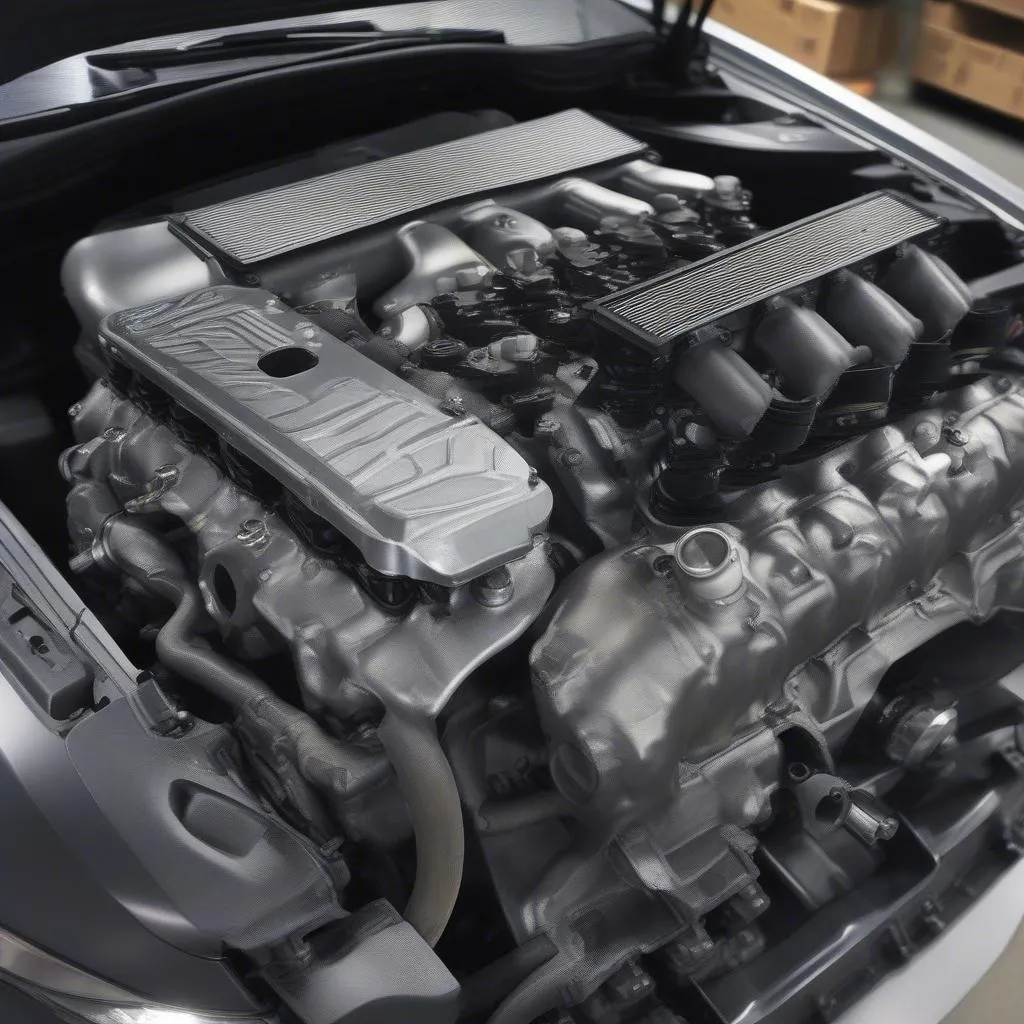Experiencing an oil leak in your Mercedes E320? Don’t panic! While oil leaks can be worrisome, some common culprits often have straightforward solutions you can tackle yourself. This guide will walk you through the usual suspects in a Mercedes E320 oil leak and offer practical DIY fixes.
Common Causes of Mercedes E320 Oil Leaks
Before diving into solutions, let’s identify the common areas prone to leaks in a Mercedes E320:
- Valve Cover Gasket: Over time, the valve cover gasket, responsible for sealing the valve cover to the cylinder head, can become brittle and crack, leading to oil seepage.
- Oil Filter Housing Gasket: Similar to the valve cover gasket, the oil filter housing gasket can wear out and leak, particularly around the bolt areas.
- Crankshaft Seal: Located at the front and rear of the engine, crankshaft seals prevent oil from escaping the crankshaft. Wear and tear can cause these seals to leak.
- Oil Pan Gasket: The oil pan gasket seals the oil pan to the engine block. Over time, it can deteriorate or become dislodged, resulting in leaks.
mercedes-e320-engine-oil-leak|Mercedes E320 Engine Oil Leak|An image of a Mercedes E320 engine with a visible oil leak, highlighting the oil leak location.
Recognizing the Symptoms
How do you know it’s an oil leak and not just a spill? Look out for these signs:
- Visible Oil Spots: Check your garage floor or driveway for fresh oil spots after parking.
- Burning Oil Smell: If you notice a burning oil smell inside the cabin, especially after driving, it might indicate an oil leak.
- Low Oil Level: Regularly check your oil level. A consistently low oil level without any visible smoke from the exhaust pipe often points to a leak.
- Engine Noise: While not always directly related to oil leaks, unusual engine noises, such as ticking or knocking, could indicate oil starvation due to a leak.
car-oil-leak-on-garage-floor|Car Oil Leak on Garage Floor|A close-up image of a significant oil stain on a garage floor, indicating a car oil leak.
Gathering the Right Tools
Before starting any DIY repair, assemble the following:
- New Gaskets/Seals: Order the specific gasket or seal for the area you’ll be working on.
- Socket Set and Wrenches: You’ll need these to loosen and tighten bolts.
- Torque Wrench: Crucial for tightening bolts to the correct specifications, especially for delicate engine components.
- Degreaser and Rags: Used to clean the area around the leak before and after the repair.
- Oil Drain Pan: To collect the old oil when removing components.
- Replacement Oil: Have enough fresh oil ready to replenish the engine after the fix.
car-repair-tools-and-equipment|Car Repair Tools and Equipment|An image of essential car repair tools and equipment, including a socket set, wrenches, torque wrench, degreaser, rags, an oil drain pan, and replacement oil.
DIY Easy Fixes
For simpler leaks, like a valve cover gasket or oil filter housing gasket, here’s a basic guide:
- Safety First: Disconnect the negative battery terminal before starting.
- Locate the Leak: Clean the suspected area thoroughly and run the engine briefly to pinpoint the leak source.
- Access the Component: Remove any components obstructing access to the leaking gasket/seal.
- Remove Old Gasket/Seal: Carefully pry off the old gasket, ensuring no debris falls into the engine.
- Clean the Surface: Use a degreaser to thoroughly clean the mating surfaces where the new gasket/seal will sit.
- Install New Gasket/Seal: Apply a thin layer of sealant (if required) to the new gasket and carefully position it.
- Reassemble and Torque: Reinstall all components in reverse order, tightening bolts to the manufacturer’s torque specifications.
- Refill Oil: Once everything is back in place, refill the engine with fresh oil to the correct level.
- Double-Check: Reconnect the battery and run the engine, checking for leaks.
FAQs
Q: Can I still drive my car with an oil leak?
Driving with a leak is risky. It can lead to engine damage if oil levels get critically low. Addressing the leak promptly is essential.
Q: Can an OBD2 scanner help diagnose an oil leak?
While not directly, an OBD2 scanner like those offered by CARDIAGTECH can reveal engine performance issues that might be indirectly caused by an oil leak.
Q: Are Mercedes E320s known for oil leaks?
Like any vehicle with age, gaskets and seals can wear out. While not inherently prone to leaks, regular maintenance helps prevent these issues in a Mercedes E320.
Conclusion
Addressing oil leaks promptly is vital for the health and longevity of your Mercedes E320. While this guide provides basic steps for simple fixes, more complex leaks, like those from the crankshaft seal or oil pan gasket, often require professional expertise.
Remember, if you’re ever unsure, consult a qualified mechanic. They can accurately diagnose the issue and ensure a proper repair.


